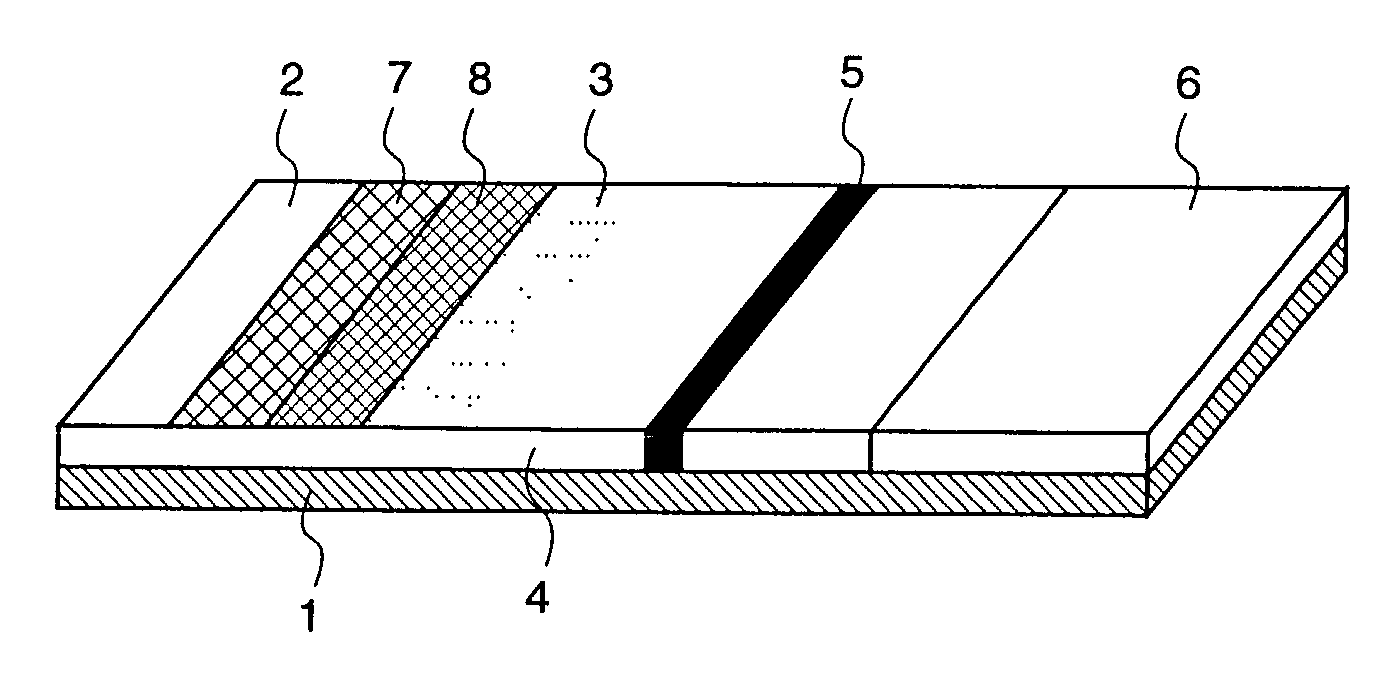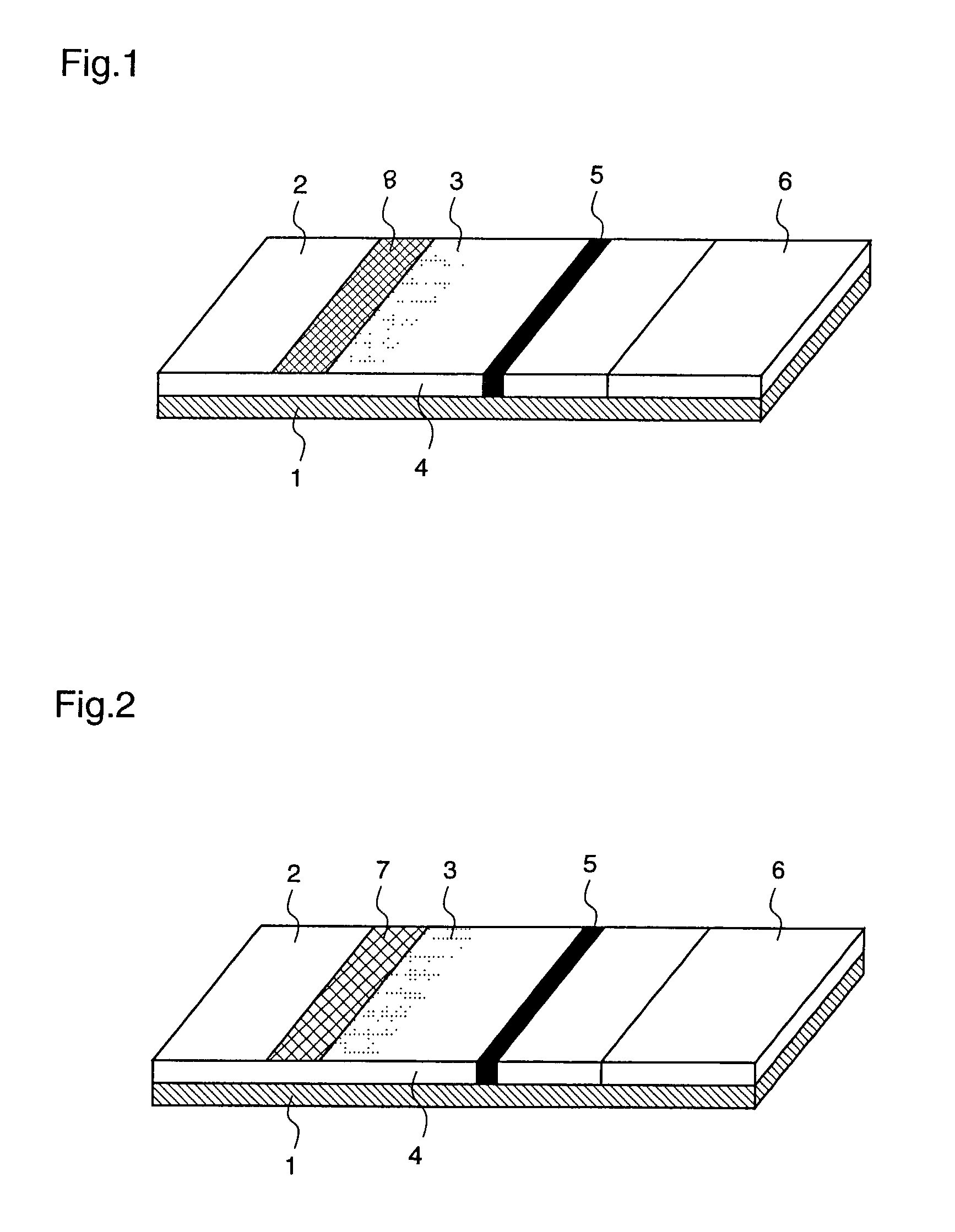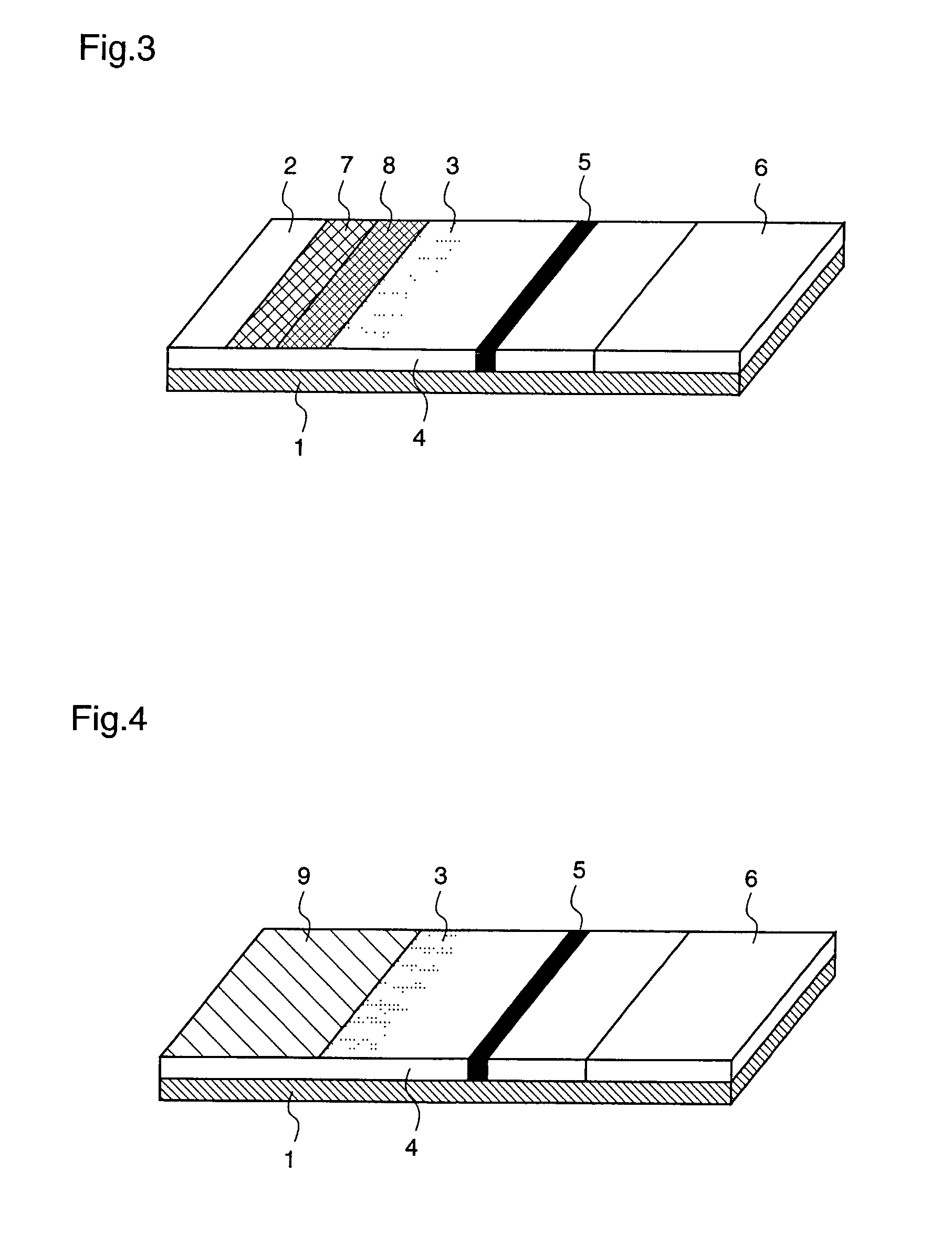Biosensor
a biosensor and sensor technology, applied in the field of biosensors, can solve the problems of difficult to analyze blood general constituents, unfavorable chromatographic sensors, and difficult to perform the measurement directly with whole blood, and achieve the effect of convenient portability and easy handling
- Summary
- Abstract
- Description
- Claims
- Application Information
AI Technical Summary
Benefits of technology
Problems solved by technology
Method used
Image
Examples
embodiment 1
[0088]A first embodiment of the present invention will be described with reference to FIG. 1.
[0089]FIG. 1 is a perspective view illustrating the structure of a biosensor according to the first embodiment of the present invention.
[0090]In FIG. 1, numeral 1 denotes a reactive layer carrier support body composed of a liquid-impermeable material such as a plastic, which supports chromatography materials. Numeral 2 denotes a sample application area composed of a nonwoven fabric or glass fiber filter paper having high absorptivity, or the like, to which an inspection target solution is added or applied, numeral 8 denotes a bleaching reagent hold region where a bleaching reagent having the action of bleaching a blood pigment is held so as to be dissolved, numeral 3 denotes a marker hold region where a marker reagent is held so as to be dissolved, numeral 4 denotes a reactive layer made of nitrocellulose or the like, in which the sample is developed to cause a reaction, numeral 5 denotes a ...
embodiment 2
[0096]Hereinafter, a second embodiment of the present invention will be described with reference to FIGS. 2 and 3.
[0097]FIG. 2 is a perspective view illustrating the structure of a biosensor according to the second embodiment of the present invention, and FIG. 3 is a perspective view illustrating the structure of another biosensor according to the second embodiment of the present invention.
[0098]In FIGS. 2 and 3, numeral 7 denotes a contraction agent hold region where a cellular component contraction agent is held so as to be dissolved. With respect to other constitutions, the same regions as those shown in FIG. 1 will be denoted by the same reference numerals and their descriptions will be omitted. The respective regions of the sample application area 2, the marker hold region 3, the reactive layer 4, the specific protein immobilization part 5, the water absorbing area 6, the contraction agent hold region 7, and the bleaching reagent hold region 8 are formed being laminated or conn...
embodiment 3
[0109]Hereinafter, a third embodiment of the present invention will be described with reference to FIGS. 4 and 5.
[0110]FIG. 4 is a perspective view illustrating the structure of a biosensor according to the third embodiment of the present invention, and FIG. 5 is a perspective view illustrating the structure of another biosensor according to the third embodiment of the present invention.
[0111]In FIG. 4, numeral 9 denotes a mixed reagent hold region where a mixed reagent of a cellular component contraction agent and a bleaching reagent is held so as to be dissolved. With respect to other constitutions, the same parts as those shown in FIG. 1 will be denoted by the same reference numerals and their descriptions will be omitted. The respective regions of the marker hold region 3, the reactive layer 4, the specific protein immobilization part 5, the water absorbing area 6, and the mixed reagent hold region 9 are formed on the reactive layer carrier support body 1.
[0112]In FIG. 5, numera...
PUM
| Property | Measurement | Unit |
|---|---|---|
| density | aaaaa | aaaaa |
| diameter | aaaaa | aaaaa |
| width | aaaaa | aaaaa |
Abstract
Description
Claims
Application Information
 Login to View More
Login to View More - R&D
- Intellectual Property
- Life Sciences
- Materials
- Tech Scout
- Unparalleled Data Quality
- Higher Quality Content
- 60% Fewer Hallucinations
Browse by: Latest US Patents, China's latest patents, Technical Efficacy Thesaurus, Application Domain, Technology Topic, Popular Technical Reports.
© 2025 PatSnap. All rights reserved.Legal|Privacy policy|Modern Slavery Act Transparency Statement|Sitemap|About US| Contact US: help@patsnap.com



